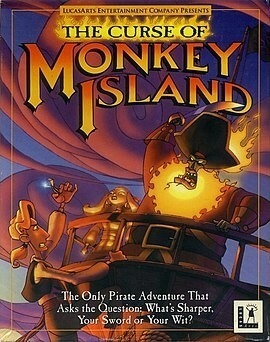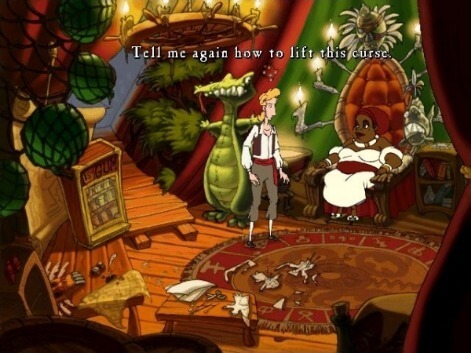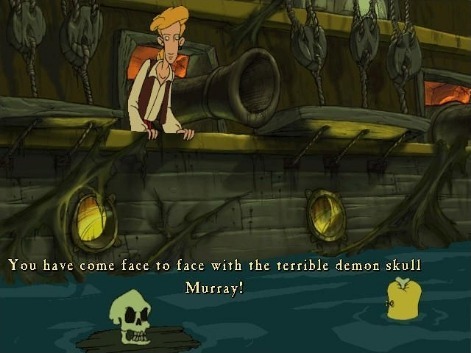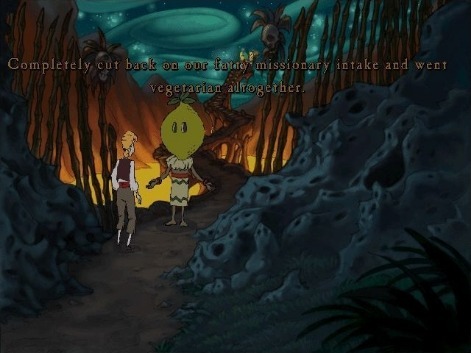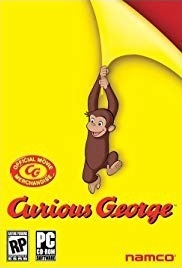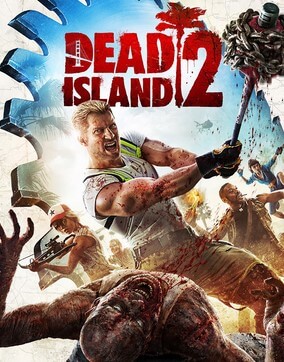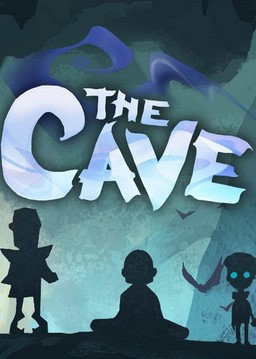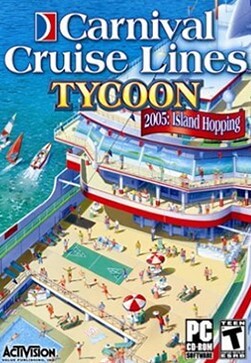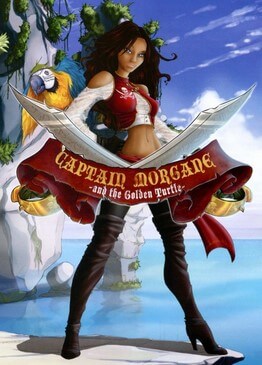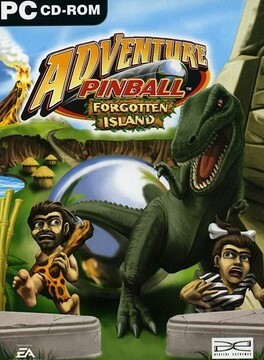The Curse of Monkey Island is an adventure game developed and published by LucasArts, and the third game in the Monkey Island series. It was released in 1997 and followed the successful games The Secret of Monkey Island and Monkey Island 2: LeChuck's Revenge. The game is the twelfth and last LucasArts game to use the SCUMM engine, which was extensively upgraded for its last outing before being replaced by the GrimE engine for the next game in the series, Escape from Monkey Island. The Curse of Monkey Island is the first Monkey Island game to include voice acting, and has a more cartoon-ish graphic style than the earlier games.
The game's story centers on Guybrush Threepwood, a wannabe pirate who must lift a curse from his love Elaine Marley. As the story progresses, he must deal with a band of mysterious pirates, a rival stereotypical French buccaneer, a band of cutthroat smugglers, as well as his old nemesis Captain LeChuck.
Gameplay
The Curse of Monkey Island is a point-and-click adventure game. The SCUMM engine was also used in this Monkey Island installment but it was upgraded to a "verb coin" (modelled after Full Throttle), an interface that consisted in a coin-shaped menu with three icons: a hand, a skull, and a parrot, basically representing actions related to hands, eyes and mouth, respectively. These icons implied the actions Guybrush would perform with an object. The hand icon would usually mean actions such as picking something up, operating a mechanism or hitting someone, the skull icon was most used for examining or looking at objects and the parrot icon was used to issue Guybrush commands such as talking to someone or opening a bottle with his teeth. The inventory and actions were thus visible on click, rather than on the bottom of the screen as previous point-and-click games by Lucasarts.
The player controlled a white 'X' cursor with the mouse, that turned red whenever landing onto an object (or person) with which Guybrush could interact. Holding left click over an object, whether in or outside the inventory, would bring up the coin menu, while right clicking it would perform the most obvious action with this particular object. Right clicking a door, for example, made Guybrush attempt to open it, while right clicking a person meant talking to him or her.
Plot
Guybrush Threepwood is adrift in the sea in a floating bumper car, unable to recall how he escaped from the Big Whoop amusement park. He approaches Plunder Island, which is governed by his love Elaine Marley and under siege by the zombie pirate LeChuck. LeChuck captures him and locks him in the ship's hold. Seeking a way out, Guybrush fires an unrestrained cannon (causing LeChuck to drop a magical voodoo cannonball which explodes, destroying LeChuck's zombie body), finds a diamond ring in the treasure hold, and escapes the ship as it sinks. He reunites with Elaine and proposes to her with the diamond ring. However, the ring is revealed to be cursed, and when Elaine puts it on she is transformed into a gold statue and stolen by marauders.
The Voodoo Lady tells Guybrush he must travel to Blood Island to find a diamond ring of greater value to break the spell. Guybrush recovers the statue Elaine, finds a map to Blood Island and secures a ship and crew to take him there. On the journey, the ship is attacked by Captain Rottingham, who steals the map. After much practice, Guybrush learns seabattle insult swordfighting and defeats Rottingham when they next meet, reclaiming the map. However, soon afterwards, Guybrush's ship crashes on Blood Island in a storm, Elaine's statue is launched inland, and the crew mutinies. Meanwhile, LeChuck is inadvertently revived as a pyrokinetic demon-pirate by a scavenging pirate, and sails back to his carnival on Monkey Island to organize the capture of Guybrush and Elaine.
Alone on Blood Island, Guybrush meets the locals, including the cannibals of Monkey Island, learns a sad tale of lost love, and feigns death to enter a crypt and secure a new engagement band. He gambles with smugglers in order to acquire an uncursed diamond, combines the two to make a new ring, and returns Elaine to normal. The two share a moment before LeChuck's skeletal army seizes them.
LeChuck transforms Guybrush into a child once again and leaves him in the Big Whoop amusement park with Elaine. Using a hangover cure discovered on Blood Island, Guybrush becomes an adult again and gets on the Rollercoaster of Death to confront LeChuck. Guybrush improvises an explosive and sets off an avalanche, burying LeChuck under the theme park. Guybrush and Elaine marry and set sail for their honeymoon, as various friends that were met on his adventures wave them goodbye.
Reception
Sales
The Curse of Monkey Island sold 52,049 copies in the United States by the end of 1997, according to market research firm PC Data. Another 40,538 copies were purchased in the country between January 1998 and July 1998, which drew revenues of $1.57 million for the period. The game was a success in the German market: Heinrich Lenhardt of PC Gamer US wrote, "If it wasn't for the sales figures in Germany, LucasArts probably wouldn't have bothered" to continue the franchise. In the second half of November 1997, Curse debuted at #4 on Media Control's computer game sales charts for the German market. It held in the top 10 through January 1998, peaking in third place for the first half of December, and its streak in the top 20 continued through March. The game had spent 24 weeks in Media Control's top rankings by the end of May, when it secured 27th place. In August, Curse received a "Gold" award from the Verband der Unterhaltungssoftware Deutschland (V.U.D.), indicating sales of at least 100,000 units across Germany, Austria and Switzerland.
The game remained on shelves by 2001: that year, PC Data reported sales of another 19,552 units in North America. Louis Castle of Westwood Studios estimated The Curse of Monkey Island's lifetime sales at 300,000 copies by 2002, while LucasArts' Bill Tiller stated in 2003, "I think CMI sold over half a million units world wide". Tiller recalled total sales between 700,000 and 800,000 copies in 2009.
